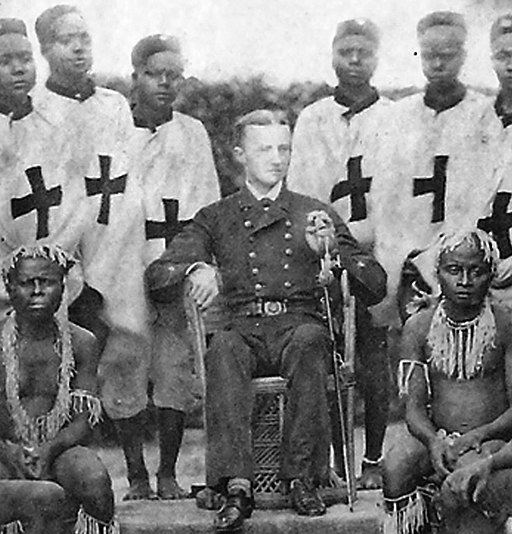Only six weeks away from Indigenous People’s Day, and tucked away in the Andaman archipelago, is a small island known as North Sentinel. It’s not only one of the most dangerous places on earth, it’s also one of the most important. Unlike the other islands in the Andaman Chain including South Sentinel Island, this island is quite different.
It is home to one of the last isolated tribes on earth, the Sentinelese. It’s been nearly 1200 years since Marco Polo explored the Andaman Islands and first described what we believe were the Sentinelese mistakenly as cannibals.
After the British claimed dominion over the India in 1757 — an East India Company shipped first noticed fires on its beaches in 1771. The first colonial, Holmfray (a British surveyor) landed on the Island in 1867. That same year, the MV Ninevah ran aground on North Sentinel’s reef. The 106 passengers and crew fended off attacks by the Sentinelese until a British ship rescued them.
Maurice Vidal Portman
When Maurice Vidal Portman became British Government Administrator to the Andaman’s — he may multiple trips to the Island starting in January 1880. In one such trip, taking an elderly Sentinelese couple and their grandchildren back to Port Blair. After the elderly grandparents died of disease shortly after arriving at Port Blair, the children were returned to the island with gifts.
In 1896, a convict who escaped from a nearby penal colony drifted his way onto the shores of North Sentinel. His body was found days later full of arrows. And then there was the MV Primrose ran aground on the reefs of North Sentinel Island in 1981. After several harrowing days where the Sentinelese attempted to use boats to board the ship — the shaken crew was rescued. In 2006 — a boat with two fisherman drifted onto the beaches of the island and were killed by the Sentinelese. Most recently in 2018, American Missionary John Allen Chau landed on the island was killed by the tribe. In 1975, they even fired arrows at King Leopold III of Belgium.
Thankfully, recent history shows us that not all encounters ended in hostility. North Sentinel isn’t just a forbidden, largely unexplored island. In the 1990s, multiple trips to the island from local anthropologists even saw the tribe accepting coconuts as gifts. Sanctioned trips to the island ceased in 1997.
Although the isolated land of wonderment continues to be a magnet for encounters between one of the world’s last uncontacted tribes and modern civilization, we cannot allow it to be for many reasons, and a few of those should serve as dire warnings.
Lack of immunity
Just like those two elderly Sentinelese that Maurice Vidal Portman abducted, the Sentinelese have no immunity to modern diseases which are prevalent in our society today. Whether the tribe’s population is 50 or 400, contact with us — which they clearly don’t want — could wipe them out completely. Contact from a single American missionary could be catastrophic to the entire tribe.
Since the dawn of man, we’ve made choices about our planet. Whether because of tribal belief, invaders who abduct their elders and children, or some history that we don’t know like the Japanese occupation of the Andaman Islands, the Sentinelese want nothing to do with us. Successful trips to the island and periods of contact have frequently ended with Sentinelese standing on their haunches and brandishing weapons. We should honor their wishes.
Gateway to the past
North Sentinel Island isn’t just a forbidden, unexplored Island. It’s a gateway into our past. Around 60,000 years ago, it’s believed that the Sentinelese walked from the nearby continents and became trapped on the Island as sea levels rose. They are a window into our past, a rare look back at where we’ve come from. One that should not be disturbed.
With a world population of approximately 8,091,734,930 and a population of less than 500 on North Sentinel — the responsibility is ours to protect them. Not the other way around. The tribe preserves the lifestyle that they choose each and every day by being independently sustainable on that remote island. Even though they are technically part of India — they don’t know it.
It could be argued that we need to study their way of life and make every attempt to see North Sentinel Island. But with the dangers that it posses to the people of North Sentinel from both disease and from the unfortunate violence when outsiders are encounters, makes the status quo that has withstood for thousands of years most appropriate.
In 2004, after a tsunami had crashed into the Andaman Islands, the Indian Navy dispatched a helicopter to fly over North Sentinel to offer assistance. A lone tribesman emerged pointing a bow and arrow at the helicopter and so communicated the Sentinelese view of us — please leave well enough alone.
Michael Thomas Leibrandt is a historical writer who lives and works in Abington Township, PA.


